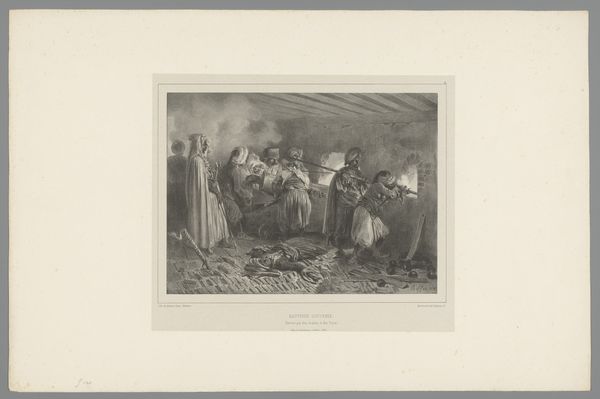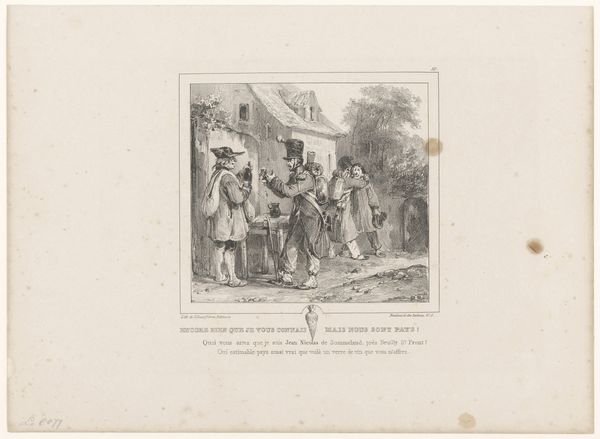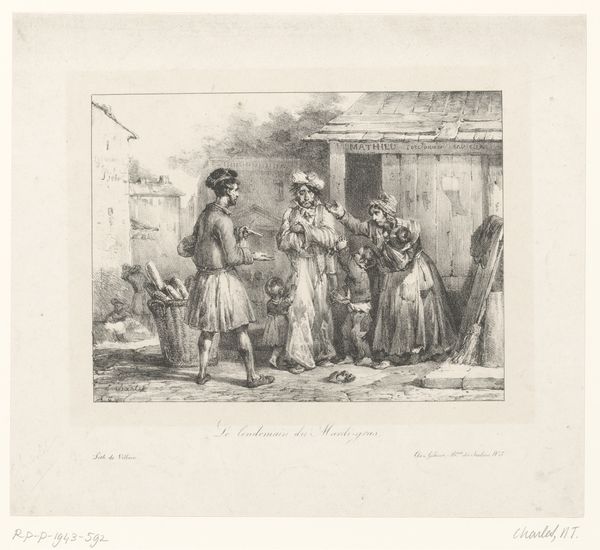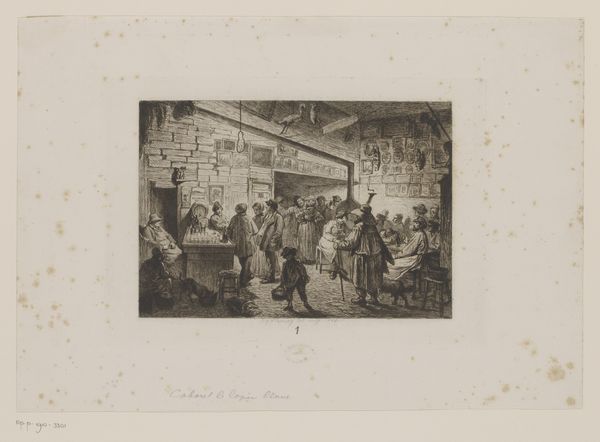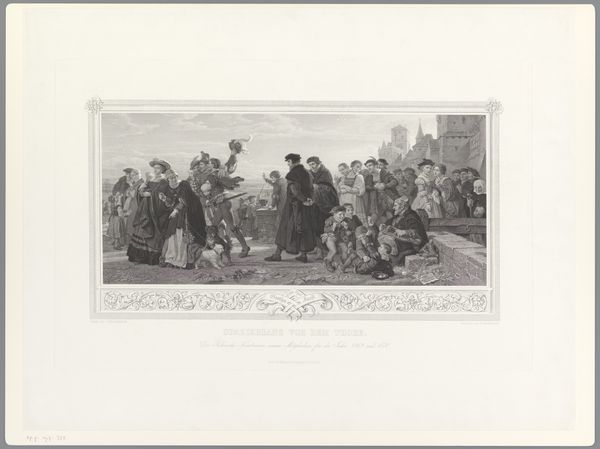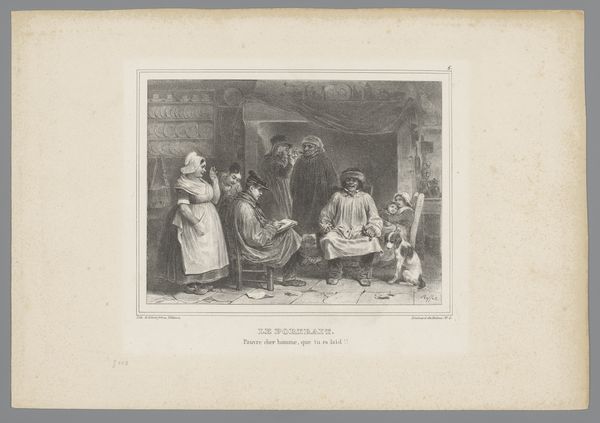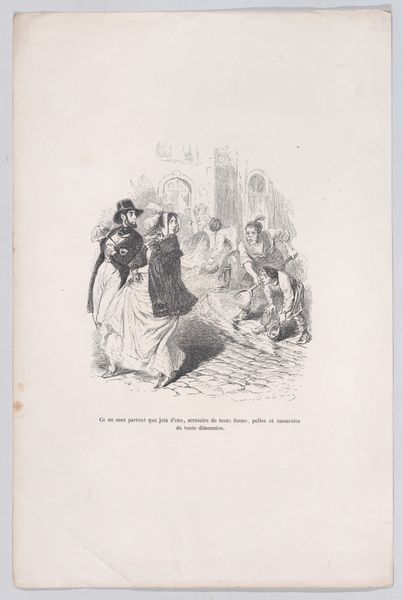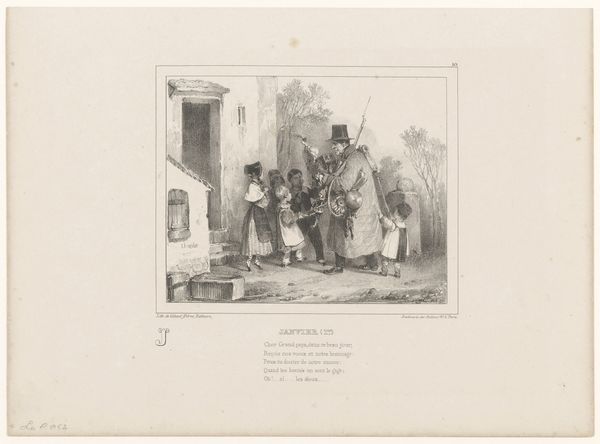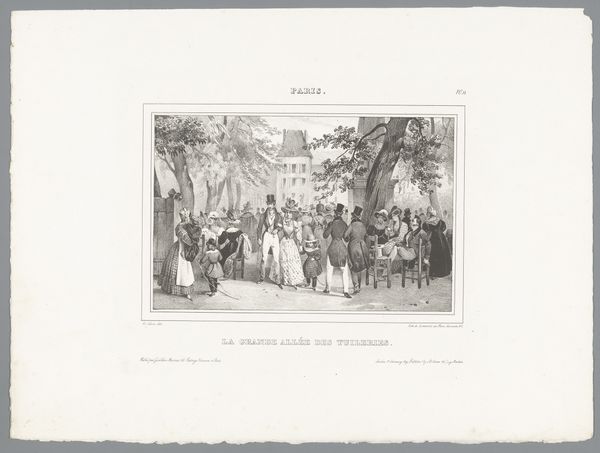
Dimensions: Plate: 8 1/16 × 13 in. (20.5 × 33 cm) Sheet: 11 9/16 × 16 13/16 in. (29.3 × 42.7 cm)
Copyright: Public Domain
Editor: This is Frederic Leighton's "Andromache in Captivity," an 1889 etching. It's a rather bleak scene with lots of figures, but the composition makes it hard to see any individual stand out other than Andromache in the middle. What catches your eye in this print? Curator: Immediately, I see an industrial process shaping our consumption of antiquity. Look at this etching; it reproduces, and thus commodifies, Leighton's vision. This isn't just art; it’s industry replicating an idealized past for a growing consumer base, one willing to consume images of tragedy. Editor: So, it’s less about the classical subject matter and more about how the printmaking enables it to reach more people? Curator: Exactly! Etching is an inherently reproducible medium. Think about the social implications. It’s about access and distribution. Who could afford an original Leighton painting? But a print? It democratizes the image, sure, but it also industrializes grief, turning Andromache’s pain into a marketable commodity. It prompts us to think critically about the labor and technologies required to mass produce images, particularly those rooted in historical narratives. Editor: It’s a different lens than I normally consider. I was caught up in the composition, in the neoclassical drama. I suppose I missed that someone, or multiple someones, made this image. Curator: And under what conditions? What was the labor division in Leighton's studio? These prints allow us to move beyond the individual artistic genius and examine the systems that support artistic production, revealing connections between high art and the broader industrial landscape. It gives me a broader view of its function in Victorian society. Editor: I see what you mean! Thanks for making me think more about the art as something material produced through specific processes, with specific ramifications, and not just art itself.
Comments
No comments
Be the first to comment and join the conversation on the ultimate creative platform.


